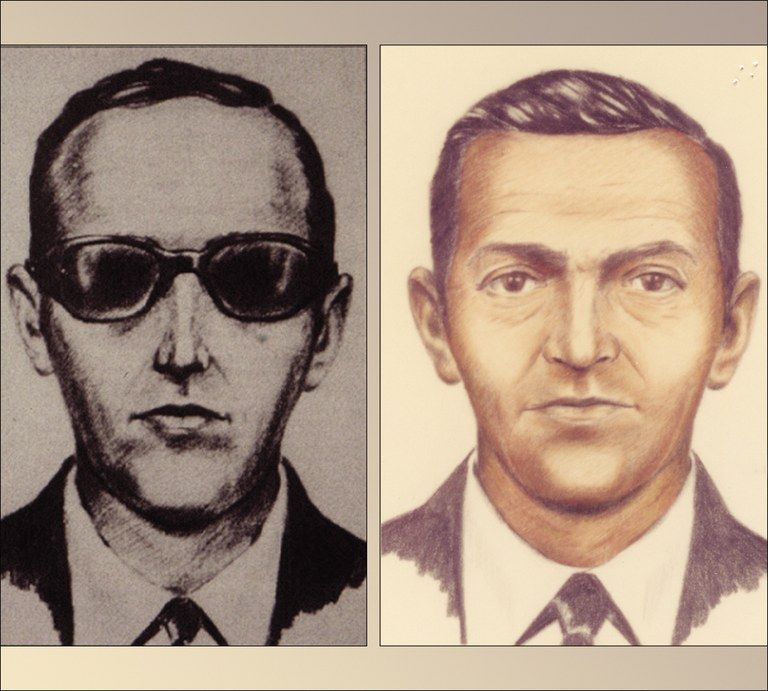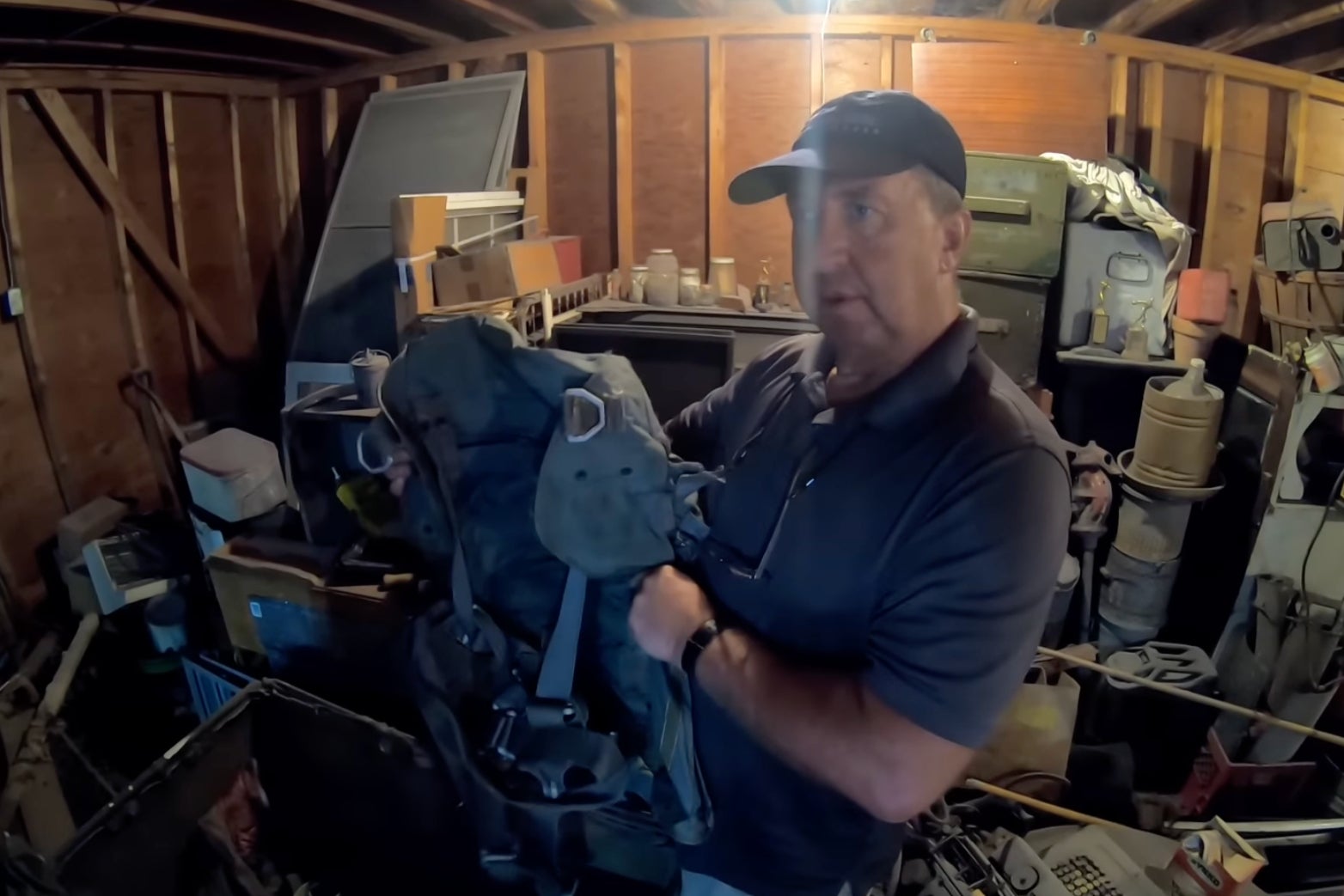For more than half a century, the name D.B. Cooper has stood at the center of one of the most enduring mysteries in U.S. aviation history. In November 1971, an unidentified man hijacked Northwest Orient Flight 305, secured a ransom of $200,000, parachuted from the aircraft, and disappeared without leaving a confirmed trace. The case remained unsolved despite decades of investigation, thousands of leads, and extensive searches across the Pacific Northwest.
Now, after years of independent research, a new theory has resurfaced—one that once again places Richard Floyd McCoy Jr. at the center of the discussion.
A Mystery That Captured a Nation

On November 24, 1971, a passenger using the name “Dan Cooper” presented a note to a flight attendant indicating he had an explosive device. The individual remained calm, cooperative, and methodical throughout the incident. After receiving a ransom and parachutes in Seattle, he released the passengers and ordered the aircraft to take off toward Mexico. Somewhere over Washington State, he exited the plane using a parachute and was never officially located.
For decades, investigators analyzed evidence, interviewed witnesses, and followed leads, yet the identity of the individual remained unknown.
The Renewed Focus on Richard Floyd McCoy Jr.
Although McCoy had long been considered a possible suspect, the FBI eventually dismissed him, stating that certain details and timelines did not conclusively match the Cooper case. McCoy was involved in a separate hijacking in April 1972, an incident that bore notable similarities to the Cooper event. He was later convicted for that crime.
Recently, a retired airline captain, Dan Grider, conducted an independent investigation that reexamined historical documents, interviewed individuals connected to McCoy’s life, and reviewed previously overlooked material. Grider’s research suggests a potential link between McCoy and items similar to those described in the 1971 case, including a particular type of parachute rarely seen outside of specialized military use.
One of the most striking claims from Grider’s findings involves a parachute reportedly discovered in a storage unit in Utah. According to his research, the parachute displayed characteristics matching early descriptions from the Cooper investigation. This has renewed interest in whether McCoy should be reconsidered as a viable suspect.
Family Reflections and Historical Context

During Grider’s research, he interviewed individuals close to McCoy, including members of McCoy’s family. Some expressed that they had long wondered whether McCoy could have been involved in the Cooper case, although they acknowledged having no direct confirmation.
Their reflections do not serve as evidence but highlight how the mystery has shaped discussions within the family for many years.
Why McCoy Stands Out to Some Researchers
Supporters of the McCoy theory point to several factors:
-
Experience: McCoy served in the military and had training related to aviation and parachuting—skills consistent with what would have been required for the Cooper escape.
-
Similar Modus Operandi: McCoy’s 1972 hijacking shared several procedural similarities with the Cooper incident, including behavior, requests, and logistical details.
-
Geographic Connections: McCoy lived in areas not far from flight paths and military facilities connected to aviation training.
-
Physical Descriptions: Some researchers argue that McCoy matched certain elements of the composite sketches produced after the 1971 incident.
It is important to note that these points are part of ongoing debate and are not universally accepted.
Current Developments

Recent reports indicate that investigators and researchers may seek more direct forms of verification. In some discussions, DNA testing has been raised as a possibility, though official agencies have not made public statements confirming any new forensic plans.
If testing or new archival reviews were conducted, they would represent the most significant update to the Cooper case in many years.
An Enduring Piece of American Folklore

The D.B. Cooper case remains noteworthy not only because of its mystery, but because it intersects with aviation history, law enforcement efforts, and public fascination with unsolved events. Theories range from accidental death during the parachute jump to survival and relocation under a new identity. Books, documentaries, and research groups continue to revisit the case, analyzing every clue and inconsistency.
McCoy is only one of several individuals who have been proposed as potential suspects. Other theories point to entirely different profiles, while many investigators maintain that Cooper’s identity may never be known with complete certainty.
What This New Theory Means

If renewed analysis were to support McCoy as a credible suspect, it would not only reshape public understanding of the case—it would also help close one of the longest-running investigations in American criminal history. But until additional verifiable evidence emerges, the connection remains a subject of discussion rather than confirmed fact.
Regardless of the outcome, the renewed focus on McCoy highlights the enduring nature of the Cooper mystery. Each new discovery—whether a piece of equipment, a witness recollection, or a reinterpretation of existing evidence—contributes to a broader understanding of the case and keeps the conversation alive.
A Mystery Still Waiting for Answers
More than fifty years after the incident, the identity of the person known as “D.B. Cooper” continues to intrigue historians, researchers, and enthusiasts. Whether McCoy ultimately proves to be the individual behind the 1971 hijacking remains uncertain. What is clear is that modern research techniques, renewed public interest, and ongoing investigative work continue to bring fresh perspectives to a case long considered unsolvable.
For now, the skies over Washington still hold their secrets, and the story of D.B. Cooper remains one of the most captivating mysteries in American history.
